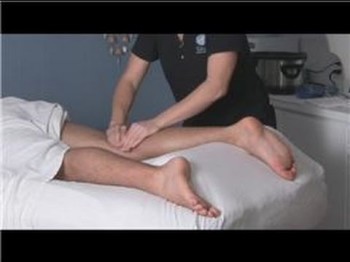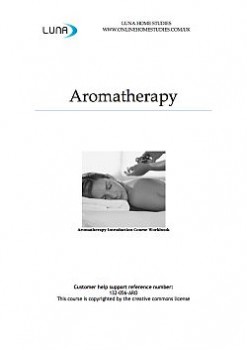Aromatherapy Case Study
Published on 9 April, 2011 | Case Studies
Aromatherapy Case Study
Time started: 17.00 Time finished:19.00
Details of treatment
Initially the patients consent was obtained and signed ,a comprehensive account taken of medical history, current medications, allergies and expectations of treatment.
My patient is a 43-year-old man with sinusitis for my expectations are to help alleviate his cold symptoms with various treatments.
a) Steam inhalation of t-tree and eucalyptus.
b) Night head massage with lavender to enhance sleep and aid decongestion.
a) The objectives are to relieve tension and muscle ache in the head/neck/shoulders.
b) Relieve some pressure around sinus area, forehead and below eyes.
c) Recommendation made to diet includes taking vitamin c and increase fresh fruit and vegetables for antioxidant properties.
The treatment is intense for the next four days to provide instant relief from the acute intensity of sinusitis. The monitor diet and lifestyle choices when he is seen following week.
I am choosing eucalyptus because of its decongestant properties; it also has a bactericidal and anti-viral action.
I am hoping that the decongestant also aids proliferation of the cold virus.
I have chose t-tree oil for the active ingredients of terpineol, this oil unusual in the fact it is active against all three categories of infections organisms bacteria, fungi and viruses. It is also a powerful immune stimulant, so I am trying to shorten the duration of the cold an assist the body to respond.
Lavender oil, I will use 3 drops in 10ml of sweet almond oil, I am using this amount after conducting an allergy patch test and he is an adult healthy male with no known contraindications. I find the sweet almond oil light and easy to use around the head /neck in comparison with some heavier oils such as wheat germ or peach kemal, I would choose to use on more mature skin.
For the inhalation I used one-drop t-tree oil and one drop of eucalyptus. This was for a period of four days, so light oil use, and monitoring effects. This was put into boiling water in a bowl and when slightly coated so not boiling two towels wrapped over shoulder and head.
I started the massage on the shoulder s by using effleurage, to bring on calm relaxation and warm the muscles making sure not to touch the spine; I gently rubbed around the shoulder blade into the c shape. When the back and shoulders were relaxed I started to massage the head. Around the head I used fingers and whole hands. I did not practise petrissage on a scalp, as it’s boney.
Effectiveness of treatment I monitored treatment by a temperature chart and taking a pulse record before and after treatment. The initial assessment was to assess if patient was infectious I fever as it would contraindicate a treatment if this is so.
The treatment was slightly elevated at 37.9 Celsius so as I used t-tree, considered this to be very good at cleansing the air too. Pulse was 68 per minute. At the start of the day the patient complained about pain around forehead and below eyes. Nasal secretions were present, but clear, thus indicating no serious rhinous infection. No pain reported in ears.
After treatment on day one temperature was still elevated. Pulse was 64.patient reported feelings of ease around the scalp and sinus area. I cannot comment on stimulation of hair growth, due to this study being a week and I feel longer would be needed to monitor this.
The end of day four, patient congested feeling less congested in his head and he had no nasal secretions. After the week of treatments I found temperature was 36.7 Celsius, so returned to normal levels. Pulse started at 66 and was always lower at the end of each treatment, the lowest on day six at 62. I concluded from this that there was some physical relaxation to slow his pulse .The effectiveness was realistic, achievable and measurable on a physical symptom basis. The patient’s testimony encouraging that he claimed it induced great feelings of relaxation. He considered that it could have helped shorten the duration of the cold and help alleviate the sinus congestion. It was effective and enjoyable in his opinion inducing feelings of well being.
The aftercare advice was always:
1) Not to move for at least five minutes then I was on hand to gently support on standing. Explaining there could be some dizziness/ light-headedness to be careful.
2) Drink plenty of water and avoid alcohol/ smoke after treatment.
3) Avoid fizzy caffeinated drinks too.
4) Drive after 10-15 minutes recovery if feeling drowsy.
I recommended the inhalations daily for four days, as the symptoms were very acute and needed regular relief. The head massage was conducted on a daily basis too, for four days then two, three day breaks and two final one three days later to conclude a weeks intense treatments.
For a case study of a colour and reiki treatment using a pendulum please visit:
A week after treatment patient has been feeling well and energised, no return of cold symptoms at this time. He followed after care advice and found micturition increased as a result. Only negative effects were passing water more frequently. He thought this could be due to his increase in water or lymphatic drainage.
I believe and the patient concluded this treatment to be effective, but the variables include how his recovery would have been if no treatment had taken place, diet lifestyle and environmental influences.
I would recommend the use of lavender and t-tree still, as an on-going treatment, because t-tree being an immune stimulant, so it could prevent regular attacks of sinusitis. Lavender is autogenic and relaxing for regular head massage, so my advice would be for preventative weekly treatment incorporated within his holistic care and lifestyle.




